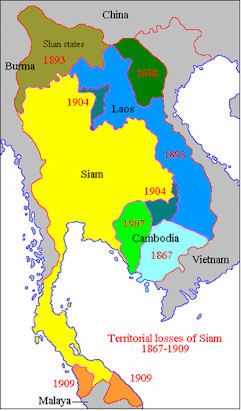

Zitierweise / cite as:
Payer, Alois <1944 - >: Chronik Thailands = กาลานุกรมสยามประเทศไทย. -- Chronik 1993 / B. E. 2536. -- 1. undatiert. -- Fassung vom 2017-03-19. -- URL: http://www.payer.de/thailandchronik/chronik1993a.htm
Erstmals publiziert: 2012-10-12
Überarbeitungen: 2017-03-19 [Ergänzungen] ; 2016-09-05 [Ergänzungen] ; 2016-08-14 [Ergänzungen] ; 2016-04-18 [Ergänzungen] ; 2016-03-01 [Ergänzungen] ; 2016-02-10 [Ergänzungen] ; 2016-01-19 [Ergänzungen] ; 2015-08-25 [Ergänzungen] ; 2015-06-14 [Ergänzungen] ; 2015-05-25 [Ergänzungen] ; 2014-11-21 [Ergänzungen] ; 2014-10-16 [Ergänzungen] ; 2014-09-29 [Ergänzungen] ; 2014-08-25 [Ergänzungen] ; 2013-04-16 [Teilung des Jahrgangs] ; 2013-04-16 [Ergänzungen] ; 2013-04-06 [Ergänzungen] ; 2013-04-01 [Ergänzungen] ; 2013-03-30 [Ergänzungen] ; 2013-03-18 [Ergänzungen] ; 2013-03-09 [Ergänzungen] ; 2013-02-13 [Ergänzungen] ; 2013-01-26 [Ergänzungen] ; 2013-01-13 [Ergänzungen]
©opyright: Dieser Text steht der Allgemeinheit zur Verfügung. Eine Verwertung in Publikationen, die über übliche Zitate hinausgeht, bedarf der ausdrücklichen Genehmigung des Herausgebers.
Dieser Text ist Teil der Abteilung
Thailand von
Tüpfli's Global Village Library
ช้างตายทั้งตัวเอาใบบัวปิดไม่มิด
|
Gewidmet meiner lieben Frau Margarete Payer die seit unserem ersten Besuch in Thailand 1974 mit mir die Liebe zu den und die Sorge um die Bewohner Thailands teilt. |
|
Bei thailändischen Statistiken muss man mit allen Fehlerquellen rechnen, die in folgendem Werk beschrieben sind:
Die Statistikdiagramme geben also meistens eher qualitative als korrekte quantitative Beziehungen wieder.
|
Statistische Daten 1993:
|
1980 - 1993
Alter beim Tod
Abb.: Alter beim Tod 1980 und 1993 (in Prozent der Todesfälle)
[Datenquelle: Pocket Thailand in figures (1996), S. 37]
Abb.: Immer mehr Menschen erreichen ein hohes Alter: 95jährige mit 5monatigem, 2007
[Bildquelle: Mattes / Wikimedia. -- Public domain]
1993
Tätigkeit von Frauen und Mädchen aus Bergvölkern, die außerhalb ihres Dorfes arbeiten:
Abb.: Tätigkeiten von 1683 Frauen und Mädchen aus 225 Hill Tribe Dörfern Nordthailands, die außerhalb ihres Dorfes arbeiten (in Prozent), 1993
[Datenquelle: Montreevat, Judy ; Ponsakunpaisan, Margaret. -- In: Development or domestication? : indigenous peoples of Southeast Asia / ed. Don N McCaskill ; Ken Kampe. -- Chiang Mai : Silkworm Books, 1997. -- 631 S. : Ill. ; 21 cm. -- ISBN 974-7100-33-9. -- S. 291]
1993
Die Debatte über Abtreibung kommt wieder in Gang durch einen Artikel in der Zeitschrift Dok Bia (ดอกเบี้ย) "Das Geschäft mit der illegalen Abtreibung - Goldgräberei im Uterus"
"In 1993, the debate over abortion resumed in the press with a scathing article in Dok Biah [ดอกเบี้ย, "Interessantes"] entitled ‘Illegal abortion business: Digging for gold in the uterus’. This article highlighted the vested financial interests in the abortion ‘business’. It estimated that the industry was worth 386 million baht each year ‘just from youths’. It detailed the various types of services available and their prices, from the small backyard clinics of the massage abortionists, to the medicine procured from a drug store to the private clinics and hospitals. Without directly naming the organisations involved, it accused some large family planning associations as really being in the ‘abortion business’ for money, using ‘family planning to hide their real business’. The article called for an end to the hypocritical face saving of the Ministry of Public Health which it stated ‘has abortion businesses open without feeling troubled at all’ and should either legalise it or ‘open widespread abortion institutes’. The article was political in its motivations, discrediting by implication the activities of Mechai Viravaidya [มีชัย วีระไวทยะ, 1941 - ], who was a high profile Senator and Head of the Population and Development Association [สมาคมพัฒนาประชากรและชุมชน]. It caused the Ministry of Public health to ‘lose face’ and pressured them and other responsible ministries such as the Interior Ministry to act against these ‘businesses’. Newspapers once again erupted into a frenzy of debate." [Quelle: Whittaker, Andrea <1967 - >: Abortion, sin, and the state in Thailand. -- London : RoutledgeCurzon, 2004. -- 189 S. : Ill. ; 25 cm. -- ISBN 041533652X. -- S. 55f.]
1993
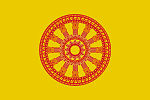
Phra Thepwethi (พระเทพเวที , 1938 - , = Prayut Payutto - ประยุทธ์ ปยุตโต, 1938 - ] in einer Broschüre über Abtreibung:
"Sin is sin, there’s no getting away from it. Like in the case of a soldier who goes off to war and kills one of the enemy. This is a sin (bap) [บาป] because a human life is destroyed. However, when we do this for a reason the degree of sin is very little. [In such cases] one is not acting out of revenge with definite intent to take the life of another, one is doing one’s duty, one is acting in the interests of the nation. Even so, a degree of sin is involved... Let me emphasise this, you should be honest and clear with yourself when you have committed a sin, that is you should accept your sin. You should acknowledge in your heart the reason you decided to act in such a way. [The next stage is] not to get preoccupied with melancholy thoughts, recrimination and sadness for this will only add to one’s sin. Instead one should think of one’s sin as the basis for turning one’s life towards greater goodness, by doing this one develops oneself more...As the Lord Buddha said ‘Some one who has sinned but has overcome their sin through goodness such a person helps brighten the world. It’s like the moon escaping the clouds and fog." [Übersetzt in: Whittaker, Andrea <1967 - >: Abortion, sin, and the state in Thailand. -- London : RoutledgeCurzon, 2004. -- 189 S. : Ill. ; 25 cm. -- ISBN 041533652X. -- S. 166, Anm. 7]
1993
Zeitungen in Chiang Mai (เชียงใหม่) berichten häufig über Selbstmorde von AIDS-Kranken, die von der Gemeinschaft geächtet wurden und die schrecklichen Folgen fürchteten, die auf den Plaskaten der AIDS-Aufklärung dargestellt werden.
Abb.: Lage von Chiang Mai (เชียงใหม่)
[Bildquelle: CIA. -- Public domain]
Abb.: Typische AIDS-Aufklärungs-Plakat aus dieser Zeit
[Bildquelle: Wellcome Images. -- Creative Commons Lizenz (Namensnennung]
1984/85 - 2010/11
Beerntete Reisfläche (erste + zweite Saat)
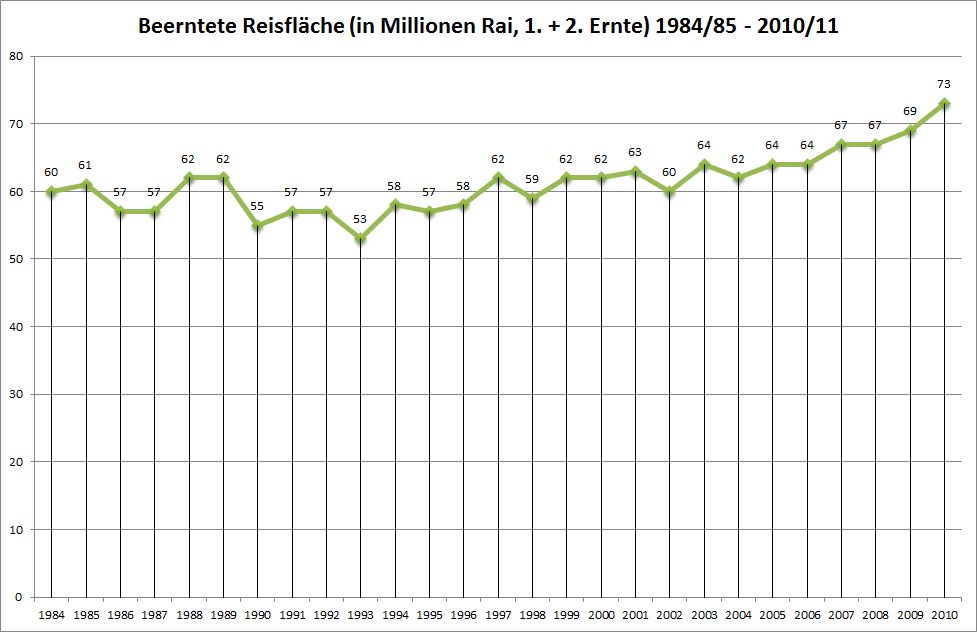
Abb.: Beerntete Reisfläche, erste plus zweite Saat (in
Millionen Rai) 1984/85 - 2010/11
[Datenquelle: Thailand in figures 2012-2013. -- Vol. 1. -- ISBN
978-616-7256-11-9. -- S. 348]
1993
Bruttoregionalprodukt
Abb.: Bruttoregionalprodukt (in Milliarden Baht), 1993
[Datenquelle: Pocket Thailand in figures (1996), S. 18]
Abb.: Thailands Regionen
[Bildquelle: NordNordWest / Wikimedia. -- Creative Commons Lizenz (Namensnennung, share alike)]Bangkok = กรุงเทพมหานคร
Umgebung von Bangkok = ปริมณฑล
Zentralthailand = ภาคกลาง
Westthailand = ภาคตะวันตก
Nordthailand = ภาคเหนือ
Nordostthailand = อีสาน (Isan)
Ostthailand = ภาคตะวันออก
Südthailand = ภาคใต้
1993 - 1995
Geschätzter jährlicher Umsatz der illegalen Wirtschaft 1993/1995:
Abb.: Geschätzter jährlicher Umsatz von Menschenhandel, Diesel-Schmuggel, Waffenhandel, Drogenhandel, Prostitution und illegalen Glücksspielen, 1993/1995
[Datenquelle: Phongpaichit u. a. (1998), S. 8]
Abb.: Illegal, aber ein Riesengeschäft, darum gegen Bestechung "geduldet": Bordell in Pattaya (พัทยา), 2004
[Bildquelle: Mjanich / Wikimedia. -- Public domain]
Abb.: Lage von Pattaya (พัทยา)
[Bildquelle: OpenStreetMap. -- Creative Commons Lizenz (Namensnennung, share alike)]
1993
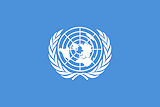
Memorandum of Understanding zwischen Kambodscha, China, Laos, Myanmar, Thailand und Vietnam über die Einrichtung von Border Liaison Offices (BLO) zur Bekämpfung des Drogenhandels. Unterstützt vom United Nations Office on Drugs and Crime (UNODC)
Abb.: Border Liaison Offices (BLO)
[Bildquelle: Border Liaison Offices in Southeast Asia 1999-2009 / UNODC - United Nations Office on Drugs and Crime. -- https://www.unodc.org/documents/southeastasiaandpacific/2010/07/blo-cambodia/Border_Book_final_6mar09.pdf. -- Zugriff am 2016-04-18. -- Fair use]
"A Border Liaison Office (BLO) is a co-ordinating office for national law enforcement agencies which facilitates and promotes greater cross-border cooperation. Starting in 1993, the six countries of the Greater Mekong Sub-region (Cambodia, China, Lao PDR, Myanmar, Thailand and Viet Nam) agreed to cooperate on counternarcotics efforts under a Memorandum of Understanding including through border control cooperation. Located close to recognised border crossings, the BLO on each side of the national border acts as a centralised clearing house for information received from the vicinity of border areas. Currently, this information relates to drug trafficking only. BLOs are typically staffed by five to seven officers from frontline law enforcement agencies including narcotics, border, local and immigration police as well as customs officers. BLO officers patrol the borders and serve as focal points for relaying important intelligence information to their counterparts.
BLOs promote communication and cooperation between different national law enforcement agencies working along the border. They also foster greater cross-border law enforcement cooperation through the sharing of real time information on drug traffickers to enable fast and effective intervention by law enforcement officers on the other side of the border. BLO counterparts meet on a regular basis both formally and informally to exchange intelligence. Periodically, regional BLO workshops are held to disseminate the latest modus operandi of traffickers and the trafficking routes. "
[Quelle: Border Liaison Offices in Southeast Asia 1999-2009 / UNODC. -- https://www.unodc.org/documents/southeastasiaandpacific/2010/07/blo-cambodia/Border_Book_final_6mar09.pdf. -- Zugriff am 2016-04-18. -- Fair use]
1993
Nach einer Polizeirazzia gegen Bordelle in Ranong (ระนอง) steigt der Preis für einen Quicky mit einer Prostituierten von 80 bis 100 Baht auf 400 Baht.
Abb.: Lage von Ranong (ระนอง)
[Bildquelle: OpenStreetMap. -- Creative Commons Lizenz (Namensnennung, share alike)]
1992 - 1993
Feldforschung von Andrea Whittaker in einem Dorf der Provinz Roi Et (ร้อยเอ็ด) hat u.a. folgende Ergebnisse:
- 88% der Haushalte ist verschuldet
- durchschnittliche Schuldenlast pro Haushalt: 7.525 Baht
- durchschnittliches Jahreseinkommen pro Haushalt: 14.617 Baht
- Tageslohn für Männer für Transport der Reissetzlinge von Saatbeet zu Pflanzfeldern: 60 Baht
- Tageslohn für Frauen für Pflanzen der Setzlinge in Pflanzfeld: 50 Baht
- Tageslohn für Pflanzen von Maniok:
- Männer: 60 Baht
- Frauen: 50 Baht
- Haushalte, von denen mindestens ein Mitglied als Saisonarbeiter auswärts arbeitet: 81%
[Datenquelle: Whittaker, Andrea: Women and capitalist transformation in a northeastern Thai village. -- In: Genders & sexualities in modern Thailand / edited by Peter A. Jackson [1955 - ] & Nerida M. Cook. -- Chiang Mai : Silkworm, 1999. -- 289 p. ; 23 cm. -- ISBN 9747551071. -- S. 45, 48, 49.]
Abb.: Lage der Provinz Roi Et (ร้อยเอ็ด)
[Bildquelle: CIA. -- Public domain]
Abb.: Prozentzahl der Jugendlichen in den Dörfern Nordostthailands, die bis zum 15. Lebensjahr mindestens einmal das Heimatdorf für eine längere Zeit verlassen haben, 1993
[Datenquelle: a.a.O., S. 60, Anm. 5]
Abb.: Tätigkeiten der 98 Wanderarbeiter dieses Dorfs (in Prozent), 1992
[Datenquelle: a.a.O., S. 51]
Abb.: Durchsnittliches Monatseinkommen der Wanderarbeiter des Dorfs (in Baht), 1992. Der gesetzliche Mindestlohn ist ca 3750 Baht pro Monat
[Datenquelle: a.a.O., S. 52]Notizen über einen Haushalt in diesem Dorf:
"Nine people live in this household. At present there is Grandfather Khai, Grandmother Oi and three grandchildren in the house, the rest are away. One twenty-three-year-old daughter works in Bangkok with her husband. She works as a housemaid and earns 1,500 baht per month and he works as a mechanic earning approximately 5,000 baht per month. This couple has three children, two sons aged seven and five and one twenty-one-month-old daughter, all of whom have been left in Ban Srisaket [Pseudonym] in the care of their grandparents. Another of the household’s sons is eighteen years old and works with his sister’s husband in Bangkok repairing cars. He earns 3,000 baht per month but does not send any money home. Another daughter, aged sixteen, works as a housemaid in Bangkok earning 1,500 baht per month. She has worked there since she was thirteen. Her fourteen-year-old brother works with her in the same house in Bangkok as a gardener, earning 1,000 baht per month. Between them they send 1,500 baht per month back to their family in the village. This village family only works seven rai of land (one rai equals 1,600 square meters). They plant six rai with glutinous or sticky rice and one rai with ordinary rice, producing enough for their own consumption. They do not have official ownership of this land as they do not wish to pay the land tax. (Field notes)" [Quelle: a.a.O., S. 49f.]
Über Frauen aus dem Dorf, die in Bangkok als Prostituierte arbeiten:
"There were a number of young women from Ban Srisaket [Pseudonym] who worked in Bangkok in snooker halls as score keepers, a job commonly associated with discretionary sex work. Local rumors and hearsay suggested that several other women were also involved in sex work, but this was difficult to confirm, since villagers are careful to maintain the reputation of local women. For example, Grandmother Phong stated, "My daughter is unmarried and she is now twenty-eight. She works in Patpong [พัฒน์พงศ์] [Bangkok’s main red-light district], but she’s not a prostitute. She doesn’t work like that!"
When I asked if there were any women in the village who worked in prostitution, Uncle Daeng laughed and said:
There must be some women who work like that. One can only suppose who they are because they don’t like their parents to know since they are ashamed and so they lie. Some are married and have children two or three years old and when they go to Bangkok they work as prostitutes. You know from the women who return wearing make-up and by what they wear. Some women wear lots of gold. You don’t know for certain but suppose that’s how they got it.
Although some villagers portrayed prostitutes as "bad" women driven by desires for money and fun, the majority perceived financial necessity as the chief motivation for sex work, as exemplified by the following informants in focus group discussions:
Women work as prostitutes because they have pressures on them from outside. I pity them. (Aunt Ni)
Women work as prostitutes because it is necessary. Some women [work that way] because they have a broken heart or their husbands leave them. (Aunt Im)
As has been reported for northern Thailand (Muecke 1992), although sex work is viewed as shameful, a prostitute is not condemned for her occupation if it is perceived that she has done so to provide financial support and enhance the well-being of her family. Aunt Thi suggested this view differentiates northeasterners from some other Thais,
I sympathize with them . . . The difference between the northeast and central people is that the people of the northeast don’t look down on prostitutes. The prostitute that has got a lot of money, it is good that they can help their family, but in central Thailand they are against that. They don’t want their children to do that."
[Quelle: a.a.O., S. 53f.]
Erbfolge:
"Grandmother Di described the pattern of inheritance in her family when she was young: In my family there were six sisters and brothers. My brothers weren’t given anything when my parents died. Each daughter received eleven rai of rice- growing land. The last daughter got more land at Ban Chang [a nearby village] and so she got twenty rai and also the house, as she had looked after our parents [in their old age]."
[...]
Grandmother Thong had already divided up her land. Each daughter had received three rai of paddy land and one rai of high land, whilst each son had received one rai of high land. The daughter who continued to look after her would inherit the house. In her view:
Nowadays sons only get a little less than daughters but the child who will stay with the parents will also get the parent’s share of land when they die. Sometimes sons will sell their land to their sisters. (Grandmother Thong)
Grandmother Sai shared her opinion:
Sons and daughters now all get equal shares and we will divide up the land and possessions and the last child or the person who looks after the mother will get her piece as well. Some people [i.e. the children] sell the house and divide the money between them [the children]."
[Quelle: a.a.O., S. 54f.]
Abb.: Brautpreise in dem Dorf, 1952 bis 1992
[Datenquelle: a.a.O., S. 57]Der Brautpreis geht an die Eltern der Braut und wird von diesen normalerweise für Investitionen oder die Abzahlung von Schulden verwendet.
1993
Von 141 männlichen professionellen Sexarbeitern in Bangkok geben 82% Arbeitslosigkeit als Grund für ihre Beschäftigung an. 100% von ihnen hatten in den zwei Wochen vor der Umfrage Sex mit männlichen Kunden, 23% mit weiblichen Kunden, 13% hatten privaten Sex mit Männern, 50% privaten Sex mit Frauen.
1993 - 1995
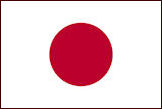
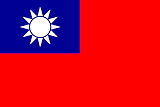

Preise thailändischer Agenten für die Vermittlung als illegale Arbeitskraft im Ausland
- Japan
- männliche Arbeiter: 150.000 bis 120.000 Baht
- Prostituierte: 800.000 Baht
- Taiwan
- männlich und weiblich: 70.000 bis 100.000 Baht
- Deutschland
- Prostituierte: 12.400 bis 17.070 Baht
[Datenquelle: Pasuk Phongpaichit <ผาสุก พงษ์ไพจิตร, 1946 - > ; Sungsidh Piriyarangsan <สังศิต พิริยะรังสรรค์, 1951 - > ; Nualnoi Treerat <นวลน้อย ตรีรัตน์>: Guns, girls, gambling, ganja : Thailand's illegal economy and public policy. -- Chiang Mai : Silkworm Books, 1998. -- 284 S. ; 22 cm. -- ISBN 4110-1-310-0061. -- S. 181]
1993 - 1995
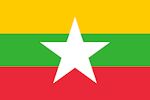
Preise thailändischer Agenten für die Einschleusung und Vermittlung von Birmanen als illegale Arbeitskraft
- Prostituierte: 10.000 Baht
- andere Arbeiter: 5.000 Baht
[Datenquelle: Pasuk Phongpaichit <ผาสุก พงษ์ไพจิตร, 1946 - > ; Sungsidh Piriyarangsan <สังศิต พิริยะรังสรรค์, 1951 - > ; Nualnoi Treerat <นวลน้อย ตรีรัตน์>: Guns, girls, gambling, ganja : Thailand's illegal economy and public policy. -- Chiang Mai : Silkworm Books, 1998. -- 284 S. ; 22 cm. -- ISBN 4110-1-310-0061. -- S. 183]
ca. 1993

In den Wa Regionen (Vāx / ဝလူမျိုး / 佤族 / ว้า) südöstlich von Pang Shang werden die vermutlich ersten Methamphetamin-Laboratorien Myanmars errichtet.
Abb.: Lage von Pang Shang
[Bildquelle: OpenStreetMap. -- Creative Commons Lizenz (Namensnennung, share alike)]
1993
Nach Schätzung des Thailand Development Research Institut konsumieren weniger als 300.000 Personen regelmäßig Methamphetamine (Ya Ba [ยาบ้า]). Davon seien
- 65% Bauern und landwirtschaftliche Arbeiter
- 7% Slumbewohner
- 6% Lastwagenfahrer
1993 - 1998
Die Firma Sri Saeng Public Works erhält Staatsaufträge für Straßenbauprojekte in der Provinz Suphan Buri (สุพรรณบุรี) über fast 1,7 Milliarden Baht. Die Firma gehört Siroj Wongsirojkul, einem engen Freund von Banharn Silpa-archa (บรรหาร ศิลปอาชา, 1932 - ),
1993

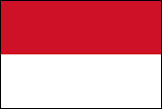
Thailand, Malaysia und Indonesien bilden das Indonesia-Malaysia-Thailand Growth Triangle (IMT-GT). Ihm gehören an:
- die 14 Provinzen Südthailands (Krabi - กระบี่, Nakhon Si Thammarat - นครศรีธรรมราช, Narathiwat - นราธิวาส, Pattani - ปัตตานี, Phattalung - พัทลุง, Satun - สตูล, Songkhla - สงขลา, Trang - ตรัง, Yala - ยะลา, Chumphon - ชุมพร, Ranong - ระนอง, Surat Thani - สุราษฎร์ธานี, Phang Nga - พังงา, Phuket - ภูเก็ต)
- die 8 Staaten von Peninsular Malaysia (Kedah, Kelantan, Melaka, Negeri Sembilan, Penang, Perak, Perlis and Selangor)
- die 10 Provinzen der indonesischen Insel Sumatra (Aceh, Bangka-Belitung, Bengkulu, Jambi, Lampung, North Sumatra, Riau, Riau Islands, South Sumatra, and West Sumatra)
Abb:: Indonesia-Malaysia-Thailand Growth Triangle (IMT-GT)
[Bildquelle: CIA. -- Public domain]
Abb.: Provinzen Thailands, die zum Indonesia-Malaysia-Thailand Growth Triangle (IMT-GT) gehören
[Bildquelle: CIA. -- Public domain]
1992-03 - 1993-03
Aus einer Umfrage zur Korruption März 1992 bis März 1993:
Antwort auf die Frage: "Wenn Sie an Korruption denken, an welche Behörden denken Sie am meisten?"
[Datenquelle: Phongpaicit / Piriyarangsan (1996), S. 156]
Abb.: Gilt als am korruptesten: Thai Polizei
[Bildquelle: Wikimedia. -- Public domain]
Antwort auf die Frage: "Wenn Sie an Korruption denken, an welche Partei denken Sie?"
[Datenquelle: Phongpaicit / Piriyarangsan (1996), S. 157]
Abb.: Gilt als korrupteste Partei: Chart Thai (พรรคชาติไทย)
®Logo
1993
Drogensüchtige:
Abb.: Von Heroin, Marihuana bzw. Amphetaminen (ยาบ้า) Abhängige, 1993
[Datenquelle: Guns, girls ... (1998), S. 93, 99,108]
Abb.: Yaba (ยาบ้า), 1990 kostete eine Tablette 20 bis 30 Baht
[Bildquelle: DEA. -- Public domain]
"Ya ba (also Yaba, Yaa baa, Ya baa or Yah bah; Thai: ยาบ้า, literally "madness drug") are tablets containing a mixture of methamphetamine and caffeine." [Quelle: http://en.wikipedia.org/wiki/Ya_ba. -- Zugriff am 2012-02-11]
1993
Graduierte an staatlichen Universitäten (außer Open Universities):
Abb.: Graduierte an staatlichen Universitäten (außer Open Universities), 1993
[Datenquelle: Pocket Thailand in figures (1996), S. 46]
1993
Studierende an privaten Universitäten:
Abb.: Studierende an privaten Universitäten 1993
[Datenquelle: Pocket Thailand in figures (1996), S. 47]
1993
Es erscheint das Album
เจินเจิน บุญสูงเนิน [Jern-jern Bunsung-nern] <1957 - >: ข้าคือคนไทย ["Ich bin Thai"]Jern-jern ist ein Transsexueller.
Abb.: Platten-Cover
1993
Die Abgabe für ausländische Filme wird von 30 Baht pro Filmmeter (so seit 1976) auf 10 Baht pro Filmmeter herabgesetzt.
Premiere des Films:
Green Menace : The Untold Story of Golf / Camera-sound, writer, director: Ing K [= สมานรัชฎ์ "อิ๋ง" กาญจนะวณิชย์] [Ing Kanjanavanit] <1959 - > ; camera - sound, editor, producer: Brian Bennett ; co-producer: Anita Pleumaron.
"The is the first and most comprehensive film on the golf industry. The documentary, directed by Ing K. investigates the socioeconomic impact of golf courses In Thailand. Although completely filmed in Thailand, its message is relevant throughout the world. From gambling to de-forestation, from army generals to beauty pageants, from lethal chemicals to confrontations with, superstar designers, the story is told through a series of surprisingly revealing interviews, with explicit action and stark, irreconcilable contrasts. More than any other leisure and real estate business, golf has come to symbolise the unjust monopolisation of natural resources - both land and water - by the wealthy few."
[Quelle: The Nation <Bangkok>. -- 1997-03-07. -- Fair use]
"The film also contains an enlightening interview with Suradej Vongsiniang, a water resource engineer who quit working for golf courses after witnessing all the problems they create. "I saw outrageous exploitation," he says. "One] golf course usurped a water source that was used by three to four villages of over 1,000 people. . . . The villagers suffer, but can do nothing. The golf course owners are influential people with everything in their power, including high government officials." When asked how golf courses steal water, Suradej replies, "From what I’ve seen at many sites, they are not subtle at all. They just take what they want. In some places .. . they build concrete channels directly from the irrigation canal, or even lay pipes from the reservoir itself. Some golf courses near big rivers dump rocks (and sand) into the river to make the water level rise so it would flow into their golf course. And what of villagers downstream? They used to travel on the river; they used to fish from it. It’s their livelihood. So what to do now? Become a caddy?"" [Quelle: Fahn, James David <1965 - >: A land on fire : the environmental consequences of the Southeast Asian boom. -- Boulder : Westview, 2003. -- 365 S. ; 24 cm. -- ISBN 0-8133-4267-8. -- S. 56f. -- Fair use]

Sila Komchai (= Winai Boonchuay) (ศิลา โคมฉาย = วินัย บุญช่วย, 1952 - ) erhält den Southeast Asian Writers Award für die Kurzgeschichtensammlung ครอบครัวกลางถนน
Abb.: Einbandtitel einer der Ausgaben
1993
Die Sammlung von Kurzgeschichten Thod Than Thee Roojak Kan (โทษฐานที่รู้จักกัน) des Kommödianten Udom Taephanich (อุดม แต้พานิช, 1968 - ) aka Nose (โน้ต) wird ein Riesenerfolg. In der Folgezeit erscheinen 25 Auflagen.
Abb.: Einbandtitel
1993
Es erscheint der Roman เวลา von ชาติ กอบจิตติ (1957 - )
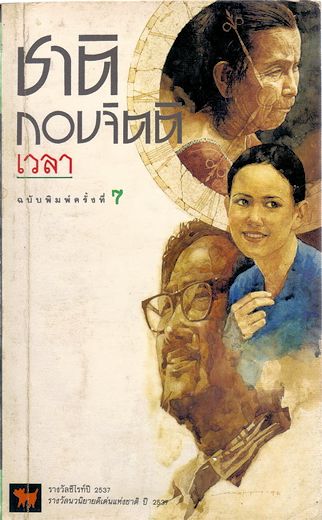
Abb.:
Einbandtitel
Englische Übersetzung: Chart Korbjitti [ชาติ กอบจิตติ] <1957 - >: Time -- Transl. by Marcel Barang. -- Internet eBook ed [for Kindle]. -- Éditions Immateriélles & ThaiFictionPublishing, 2009. -- ISBN 97 8236 3820 068. -- Originaltitel: เวลา (1993)
1993
Es erscheint der Roman über Schwule in Bangkok
รวินท์ เวโรจน์ [Rowin Werot]: เทพบุตรประเภทสอง ["Ein Gott zweiter Art]"
Abb.: Einbandtitel
1993
Beginn des Erscheinens der englischsprachigen Wochenzeitung Phuket Gazette.
Abb.: ®Logo
1993
Es erscheint
นิธิ เอียวศรีวงศ์ [Nidhi Eoseewong] <1940 - >: การเมืองไทยสมัยพระเจ้ากรุงธนบุรี [Thai Politik in der Zeit des Herrschers von Thonburi (Taksin)]. -- : มติชน, 2536 [= 1993]. -- 632 S. -- ISBN 9747049635. -- Gilt als Standardwerk
Abb.: Einbandtitel einer der Ausgaben
1993
Erste Chiang Mai Social Installation (CMSI)
"CMSI was initiated by a group of artists and art students based in Chiang Mai [เชียงใหม่]. The lifetime of this project existed for 8 years. The first CMSI took place in 1993. Chiang Mai city had turned to be a presenting space for the project. Essentially, the CMSI each year had different durations of the show time. But actually took place between December to February, and sometimes ran until March. The formation of project works in very loose manner as so that ideas of place, space, and time are very flexible. Actually, temple, crematorium, bridge, street, canal, storefront, hospital, museum, community, taxi, tuk tuk [รถตุ๊ก ๆ], Tapae gate [ประตูท่าแพ], prostitute house, department store, market, and etc. were occupied by not just only visual artists from the local and the international, but by project participants from various backgrounds – such as artists of various kinds, prostitutes, monk, intellectual, university professor, doctors, tuk tuk drivers, NGO workers, cultural activists, political protesters, ordinary people, homeless, and etc - to address their ideas to the public. CMSI was a kind of open spaces for some extent. The very starting point of CMSI began during an ongoing discussion among artists who were facing some frustration of Thai art society and the colonization of influential international art festival in relation to existing social problems in very multiple levels and dimensions of certain kinds. According to Mit Jai-in [มิตร ใจอินทร์] and Uthit Attimana whose performing roles inspired their peers of CMSI, it had become a conspiracy project that mainstream art in Thailand (Silpakornian [มหาวิทยาลัยศิลปากร]) and also the stage of art at the international arena no longer hold a critical position valuable to the society at large, excepted people in these art community were taking more and more advantage from the world, and society they lived by. And artistic practices were separated out from life, and then from the society. Art had become a site-specific space where creative acts had been dismantled, and allowed political obedience to take shape. Influenced and reinforced by Joseph Beuys' [1921 - 1986] ]ideas of “social sculpture”, CMSI was aimed at a notion of “social installation.” "
[Quelle: Thasnai Sethaseree: The Po-Mo Artistic Movement in Thailand : Overlapping Tactics and Practices. -- In: Asian Culture and History. -- Vol. 3, No. 1 (2011-01). -- S. 36f. -- Online: http://www.veramaurinapress.org/pdfs/po-mo-artistic-movement.pdf. -- Zugriff am 2016-08-14. -- Fair use]
1993

Die beiden jüdischen Synagogen Bangkoks bekommen einen dauernd in Bangkok stationierten Rabbi. Er ist ein Chabad (חב"ד) (chassidischer Orthodoxer).
1993

Die Indonesier Abdullah Sungkar (1937 - 1999) und Abu Bakar Bashir (أبو بكر باعشير) (1938 - ) gründen in Malaysia die internationale muslimische Terrororganisation Jemaah Islamiyah (JI; الجماعه الإسلاميه, "Islamische Gemeinschaft").
1993
Die Sängerin Soontaree Wechanon (สุนทรี เวชานนท์, 1955 - ) eröffnet in Chiang Mai (เชียงใหม่) ihr eigenes Restaurant mit Club, wo sie allabendlich auftritt. Sie ist eine Vertreterin des Phleng phuea chiwit (เพลงเพื่อชีวิต, "Songs for Life").
Künstlerlink auf Spotify:
URI: spotify:artist:6vH8CtqsTShVTJZgzd3S6S
URL: https://open.spotify.com/artist/6vH8CtqsTShVTJZgzd3S6S
Abb.: Soontaree Wechanon (สุนทรี เวชานนท์), 2011
[Bildquelle: Isriya Paireepairit. -- http://www.flickr.com/photos/isriya/5953974596/. -- Zugriff am 2012-05-01. -- Creative Commons Lizenz (Namensnennung, keine kommerzielle Nutzung)]
1993
Es erscheint das Album
ร็อกคงคย [Rock Khong Khoi]: เสียวโว๊ย [Spannend!]
Abb.: Kassettenhülle
[Fair use]Die Band war 1992 in Surin (สุรินทร์) gegründet worden.
1993
Gründung von Thailands erster Rating-Agentur: Thai Rating and Information Services Co., Ltd. (TRIS)
Abb.: ®Logo
"Thai Rating and Information Services Co., Ltd. (TRIS) founded in 1993 as Thailand’s first credit rating agency.[1] Initiated by Ministry of Finance and Bank of Thailand to facilitate the development of domestic bond market. Later renamed TRIS Corporation Limited in 2007.[2] TRIS Rating Co., Ltd. was established as a separate company on 3 June 2002.[2][3] In November 2011 Standard & Poor's acquired a 5% stake in TRIS Corp, the parent company of TRIS Rating."
[Quelle: http://en.wikipedia.org/wiki/Thai_Rating_and_Information_Services. -- Zugriff am 2012-10-09]
1993
Eröffnung des Golfplatzes des Bangkok Golf Club in Pathum Thani (ปทุมธานี).
Abb.: Lage des Bangkok Golf Club
[Bildquelle: OpenStreetMap. -- Creative Commons Lizenz (Namensnennung, share alike)]
Abb.: Bangkok Golf Club
[Bildquelle: ©Google earth. -- Zugriff am 2013-10-13]
1993
Architekt Chirakorn Prasongkit (จิรากร ประสงค์กิจ) von ACP Co. Ltd.: Fertigstellung des Hauses
- Ban In-Chan, Navatanee (นวธานี), Bangkok
1993
Briefmarken:
ausführlich: http://www.payer.de/thailandchronik/ressourcen.htm
Zu Chronik 1993 / B. E. 2536. -- 2. datiert